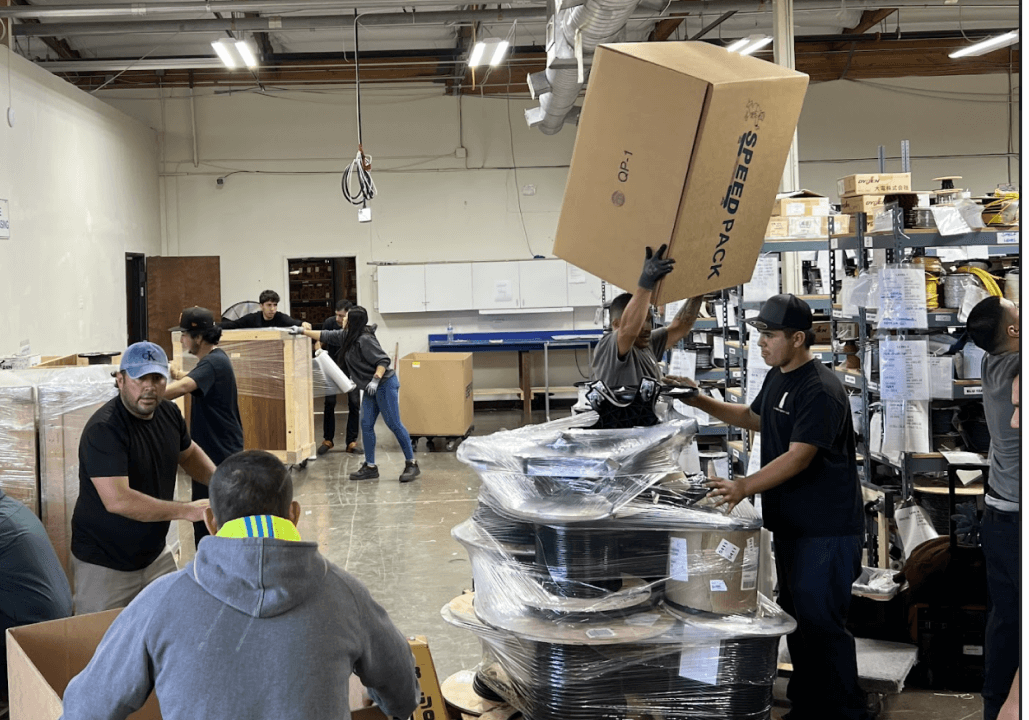Relocating an IT office, especially in a bustling tech hub like San Francisco, requires careful planning and execution. Whether it’s about expanding, reducing costs, or reaching closer to top talent, moving an IT office can have significant implications on productivity, infrastructure, and employee satisfaction. Here’s a comprehensive guide for a successful IT office relocation in San Francisco.
1. Set Clear Objectives for the Move
- Why relocate? Understanding the reasons behind the relocation is crucial for setting priorities. Common goals include accessing a larger talent pool, cost savings, proximity to key clients, or enhanced amenities.
- Align with company growth by selecting an office location that fits the company’s future trajectory. For example, larger tech spaces are more equipped for collaborative areas and agile work environments.
- Budget planning: Relocating an office can be a major financial investment. By planning for a realistic budget, IT firms can avoid unexpected costs related to technology infrastructure, employee downtime, and vendor fees.
2. Plan for Data Center and Network Infrastructure
- Assess equipment and data storage needs: Determine what can be transferred, updated, or replaced. Upgrading during a move can streamline the transition and potentially reduce costs.
- Ensure minimal downtime: Evaluate options for data backup and cloud solutions. IT companies often use hybrid cloud infrastructures; during a move, prioritizing cloud migration or managed data services can help avoid data loss or significant downtime.
- Network setup: Proper internet and network configuration are essential, especially for cloud-based companies that rely on secure and stable connections. Pre-configure servers and test for compatibility before the relocation to expedite a smooth transition.
3. Location and Real Estate Considerations
- Choose a tech-friendly area: San Francisco has numerous tech-centric neighborhoods, such as SoMa and Financial District, which provide access to nearby industry events, clients, and talent.
- Evaluate commute options: Access to public transit and parking is a top concern for employee retention, particularly in a city as dense as San Francisco.
- Workplace design: Many tech firms prioritize open-concept layouts, collaborative spaces, and areas conducive to remote work. When relocating, consider layouts that encourage teamwork and fit your company culture.
4. IT Security and Compliance
- Data compliance regulations: San Francisco companies, especially those in tech, must adhere to strict data privacy laws, such as CCPA (California Consumer Privacy Act). Ensure your data systems and processes are compliant before and after the move.
- Cybersecurity: Office relocation can make systems vulnerable, so robust security protocols should be in place. This may involve upgrading firewalls, securing networks, and setting up multi-factor authentication for employee access.
- Vendor vetting: Only work with trusted IT vendors and relocation specialists that follow the best cybersecurity practices to minimize any potential risks during the move.
5. Engage a Specialized Relocation Partner
- Professional movers with IT expertise can be instrumental in safely transporting high-value equipment like servers, workstations, and network gear. Experienced relocation companies can help dismantle, transport, and reassemble IT setups while ensuring data security.
- Coordinate with internal teams to establish a plan for packing, logistics, and reinstallation. Encourage IT staff to communicate with the moving partner to ensure no technology component is left unaccounted for.
6. Communication with Employees and Stakeholders
- Transparent communication: Early and clear communication with employees about relocation logistics helps ease transitions. Provide resources, like commuting alternatives or new office amenities, to support your team’s adaptation.
- Minimize disruptions: Assign a team to manage IT queries and technical support on the moving day to assist employees with setup.
- Update key stakeholders and clients about the relocation and communicate any temporary changes in accessibility.
7. Tech Setup and Office Move-In Day
- Testing and troubleshooting: Ensure all workstations, internet connections, servers, and software installations are operational before bringing employees to the new office.
- Backup and recovery: Backup all critical systems and data before relocation. Having a data recovery plan in place can protect your business from unforeseen data loss or equipment failure.
- Compliance check: Review office infrastructure and software to ensure it aligns with internal IT compliance standards and local regulations.
8. Post-Move Evaluation and Adjustment
- Seek feedback from employees and IT staff to assess any issues that need to be addressed immediately.
- Review costs and benefits of the move to measure its success. Compare the expected outcomes with actual results, and make note of learnings to improve future relocations.
- Optimize the new workspace: Implement employee feedback, enhance network configurations, and adjust workspaces to ensure the new office layout continues to support productivity and collaboration.
Final Thoughts
Relocating an IT office in San Francisco demands thorough planning, especially with the fast-paced nature of the tech industry. With a focus on data security, infrastructure readiness, and employee satisfaction, companies can make the transition smoother and achieve long-term benefits in their new location. By following the above steps, IT firms can ensure that their move not only serves their immediate needs but also positions them well for future growth in the vibrant San Francisco tech landscape.




